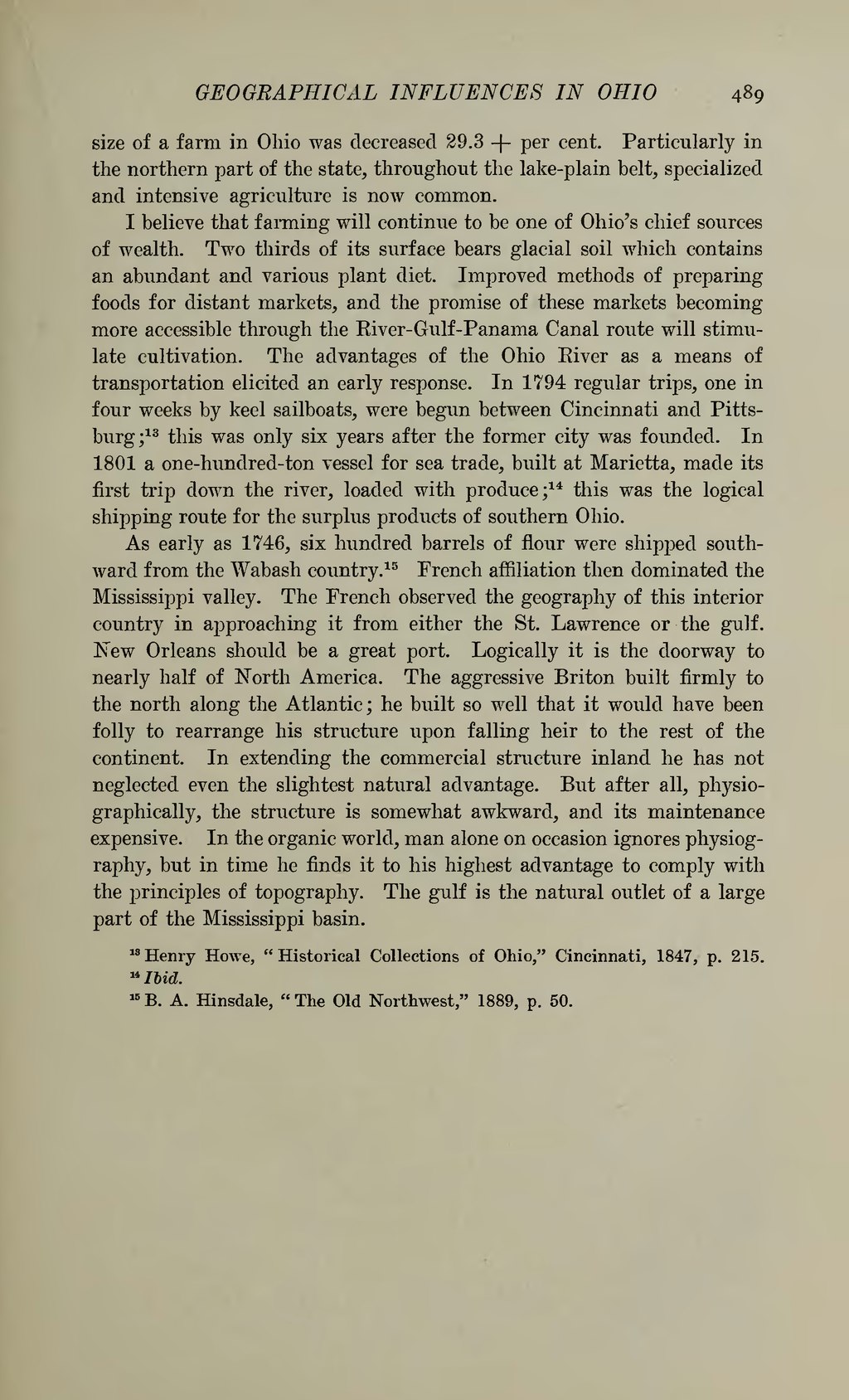size of a farm in Ohio was decreased 29.3 + per cent. Particularly in the northern part of the state, throughout the lake-plain belt, specialized and intensive agriculture is now common.
I believe that farming will continue to be one of Ohio's chief sources of wealth. Two thirds of its surface bears glacial soil which contains an abundant and various plant diet. Improved methods of preparing foods for distant markets, and the promise of these markets becoming more accessible through the River-Gulf-Panama Canal route will stimulate cultivation. The advantages of the Ohio River as a means of transportation elicited an early response. In 1794 regular trips, one in four weeks by keel sailboats, were begun between Cincinnati and Pittsburg;[1] this was only six years after the former city was founded. In 1801 a one-hundred-ton vessel for sea trade, built at Marietta, made its first trip down the river, loaded with produce;[2] this was the logical shipping route for the surplus products of southern Ohio.
As early as 1746, six hundred barrels of flour were shipped southward from the Wabash country.[3] French affiliation then dominated the Mississippi valley. The French observed the geography of this interior country in approaching it from either the St. Lawrence or the gulf. New Orleans should be a great port. Logically it is the doorway to nearly half of North America. The aggressive Briton built firmly to the north along the Atlantic; he built so well that it would have been folly to rearrange his structure upon falling heir to the rest of the continent. In extending the commercial structure inland he has not neglected even the slightest natural advantage. But after all, physiographically, the structure is somewhat awkward, and its maintenance expensive. In the organic world, man alone on occasion ignores physiography, but in time he finds it to his highest advantage to comply with the principles of topography. The gulf is the natural outlet of a large part of the Mississippi basin.
